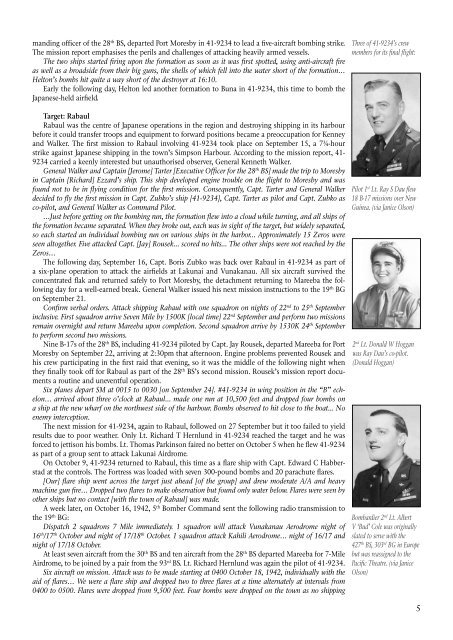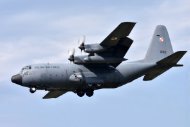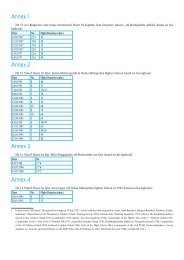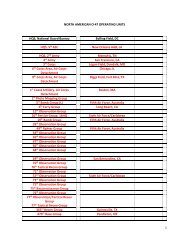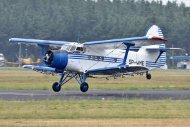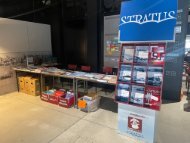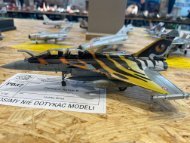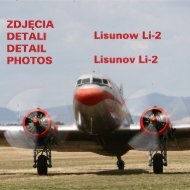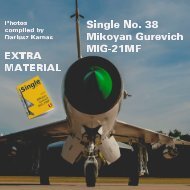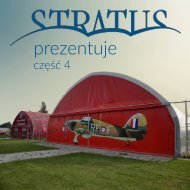B-17 CC Additional Material by Robert M Stitt
Boeing B-17 Fortress in RAF Coastal Command Service Second Edition Robert M Stitt Additional Material
Boeing B-17 Fortress in RAF Coastal Command Service
Second Edition
Robert M Stitt
Additional Material
- No tags were found...
Create successful ePaper yourself
Turn your PDF publications into a flip-book with our unique Google optimized e-Paper software.
manding officer of the 28 th BS, departed Port Mores<strong>by</strong> in 41-9234 to lead a five-aircraft bombing strike.<br />
The mission report emphasises the perils and challenges of attacking heavily armed vessels.<br />
The two ships started firing upon the formation as soon as it was first spotted, using anti-aircraft fire<br />
as well as a broadside from their big guns, the shells of which fell into the water short of the formation…<br />
Helton’s bombs hit quite a way short of the destroyer at 16:10.<br />
Early the following day, Helton led another formation to Buna in 41-9234, this time to bomb the<br />
Japanese-held airfield.<br />
Target: Rabaul<br />
Rabaul was the centre of Japanese operations in the region and destroying shipping in its harbour<br />
before it could transfer troops and equipment to forward positions became a preoccupation for Kenney<br />
and Walker. The first mission to Rabaul involving 41-9234 took place on September 15, a 7¾-hour<br />
strike against Japanese shipping in the town’s Simpson Harbour. According to the mission report, 41-<br />
9234 carried a keenly interested but unauthorised observer, General Kenneth Walker.<br />
General Walker and Captain [Jerome] Tarter [Executive Officer for the 28 th BS] made the trip to Mores<strong>by</strong><br />
in Captain [Richard] Ezzard’s ship. This ship developed engine trouble on the flight to Mores<strong>by</strong> and was<br />
found not to be in flying condition for the first mission. Consequently, Capt. Tarter and General Walker<br />
decided to fly the first mission in Capt. Zubko’s ship [41-9234], Capt. Tarter as pilot and Capt. Zubko as<br />
co-pilot, and General Walker as Command Pilot.<br />
…Just before getting on the bombing run, the formation flew into a cloud while turning, and all ships of<br />
the formation became separated. When they broke out, each was in sight of the target, but widely separated,<br />
so each started an individual bombing run on various ships in the harbor... Approximately 15 Zeros were<br />
seen altogether. Five attacked Capt. [Jay] Rousek... scored no hits... The other ships were not reached <strong>by</strong> the<br />
Zeros…<br />
The following day, September 16, Capt. Boris Zubko was back over Rabaul in 41-9234 as part of<br />
a six-plane operation to attack the airfields at Lakunai and Vunakanau. All six aircraft survived the<br />
concentrated flak and returned safely to Port Mores<strong>by</strong>, the detachment returning to Mareeba the following<br />
day for a well-earned break. General Walker issued his next mission instructions to the 19 th BG<br />
on September 21.<br />
Confirm verbal orders. Attack shipping Rabaul with one squadron on nights of 22 nd to 25 th September<br />
inclusive. First squadron arrive Seven Mile <strong>by</strong> 1500K [local time] 22 nd September and perform two missions<br />
remain overnight and return Mareeba upon completion. Second squadron arrive <strong>by</strong> 1530K 24 th September<br />
to perform second two missions.<br />
Nine B-<strong>17</strong>s of the 28 th BS, including 41-9234 piloted <strong>by</strong> Capt. Jay Rousek, departed Mareeba for Port<br />
Mores<strong>by</strong> on September 22, arriving at 2:30pm that afternoon. Engine problems prevented Rousek and<br />
his crew participating in the first raid that evening, so it was the middle of the following night when<br />
they finally took off for Rabaul as part of the 28 th BS’s second mission. Rousek’s mission report documents<br />
a routine and uneventful operation.<br />
Six planes depart SM at 0015 to 0030 [on September 24]. #41-9234 in wing position in the “B” echelon…<br />
arrived about three o’clock at Rabaul... made one run at 10,500 feet and dropped four bombs on<br />
a ship at the new wharf on the northwest side of the harbour. Bombs observed to hit close to the boat... No<br />
enemy interception.<br />
The next mission for 41-9234, again to Rabaul, followed on 27 September but it too failed to yield<br />
results due to poor weather. Only Lt. Richard T Hernlund in 41-9234 reached the target and he was<br />
forced to jettison his bombs. Lt. Thomas Parkinson faired no better on October 5 when he flew 41-9234<br />
as part of a group sent to attack Lakunai Airdrome.<br />
On October 9, 41-9234 returned to Rabaul, this time as a flare ship with Capt. Edward C Habberstad<br />
at the controls. The Fortress was loaded with seven 300-pound bombs and 20 parachute flares.<br />
[Our] flare ship went across the target just ahead [of the group] and drew moderate A/A and heavy<br />
machine gun fire… Dropped two flares to make observation but found only water below. Flares were seen <strong>by</strong><br />
other ships but no contact [with the town of Rabaul] was made.<br />
A week later, on October 16, 1942, 5 th Bomber Command sent the following radio transmission to<br />
the 19 th BG:<br />
Dispatch 2 squadrons 7 Mile immediately. 1 squadron will attack Vunakanau Aerodrome night of<br />
16 th /<strong>17</strong> th October and night of <strong>17</strong>/18 th October. 1 squadron attack Kahili Aerodrome… night of 16/<strong>17</strong> and<br />
night of <strong>17</strong>/18 October.<br />
At least seven aircraft from the 30 th BS and ten aircraft from the 28 th BS departed Mareeba for 7-Mile<br />
Airdrome, to be joined <strong>by</strong> a pair from the 93 rd BS. Lt. Richard Hernlund was again the pilot of 41-9234.<br />
Six aircraft on mission. Attack was to be made starting at 0400 October 18, 1942, individually with the<br />
aid of flares… We were a flare ship and dropped two to three flares at a time alternately at intervals from<br />
0400 to 0500. Flares were dropped from 9,500 feet. Four bombs were dropped on the town as no shipping<br />
Three of 41-9234’s crew<br />
members for its final flight:<br />
Pilot 1 st Lt. Ray S Dau flew<br />
18 B-<strong>17</strong> missions over New<br />
Guinea. (via Janice Olson)<br />
2 nd Lt. Donald W Hoggan<br />
was Ray Dau’s co-pilot.<br />
(Donald Hoggan)<br />
Bombardier 2 nd Lt. Albert<br />
V ‘Bud’ Cole was originally<br />
slated to serve with the<br />
427 th BS, 303 rd BG in Europe<br />
but was reassigned to the<br />
Pacific Theatre. (via Janice<br />
Olson)<br />
5


